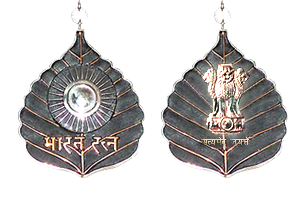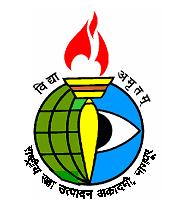
The Indian Administrative Service (IAS) is the administrative arm of the All India Services of Government of India. The IAS is one of the three All India Services along with the Indian Police Service and Indian Forest Service. Members of these three services serve the Government of India as well as the individual states. IAS officers are also deployed to various government establishments such as constitutional bodies, staff and line agencies, auxiliary bodies, public sector undertakings, regulatory bodies, statutory bodies and autonomous bodies.
Special Class Railway Apprentice (SCRA) was a programme by which candidates are selected by the Union Public Service Commission (UPSC) India, to train in the undergraduate program in mechanical engineering at the Indian Railways Institute of Mechanical and Electrical Engineering, Jamalpur. This programme started in 1927 and is one of the oldest in India.
The Indian Railway Service of Mechanical Engineering, abbreviated as IRSME, is one of the group 'A' central engineering services of the Indian railways. The officers of this service are responsible for managing the Mechanical Engineering Division of the Indian Railways. Till 2019, IRSME officers were drawn from the Combined Engineering Service Examination (ESE) and Special Class Railway Apprentice (SCRA) examination conducted by Union Public Service Commission. All appointments to the Group 'A' services are made by the president of India.
The Indian Railway Service of Signal Engineers (IRSSE) is a central engineering services group A cadre of the Indian railways. The officers of this service are responsible for managing the Signal and Telecommunications Engineering Organization of the Indian Railways.
The Indian Railways Service of Engineers (IRSE) is one of the oldest group 'A' central engineering services recruited through the engineering services examination of the Union Public Service Commission. The officers of this service are responsible for administering the Civil Engineering organisation of the Indian Railways
The Civil Services Examination (CSE) is a national competitive examination in India conducted by the Union Public Service Commission for recruitment to higher Civil Services of the Government of India, including the Indian Administrative Service, Indian Foreign Service, and Indian Police Service. It is also colloquially referred to as the UPSC examination, and UPSC CSE. and is conducted in three phases: a preliminary examination consisting of two objective-type papers, and a main examination consisting of nine papers of conventional (essay) type, in which two papers are qualifying and only marks of seven are counted; finally followed by a personality test (interview). A successful candidate sits for 32 hours of examination during the complete process spanning around one year.

The Indian honours system is the system of awards given to individuals for a variety of services to the Republic of India. The categories of awards are as follows:
Ordnance Factory Board (OFB), consisting of the Indian Ordnance Factories, now known as Directorate of Ordnance, was an organisation, under the Department of Defence Production (DDP) of Ministry of Defence (MoD), Government of India.
The Indian Telecommunications Service, widely known as ITS, and earlier known as 'Telegraph Engineering Service Class I' is one of the Central Civil Services under Group 'A' of the executive branch of the Government of India. The appointment to this service is done through Combined Engineering Services Exam held every year by Union Public Service Commission (UPSC) of India. The service was created to meet the techno managerial needs of the government in areas related to telecommunications. The Department of Telecommunications (DOT) had been managed for years by the officers of this permanent cadre, called the Indian Telecommunications Service (ITS).The officers of ITS work under restrictions and rules of Central Civil Services (Conduct) rules.
In India, the Civil Service is the collection of civil servants of the government who constitute the permanent executive branch of the country. This includes servants in the All India Services, the Central Civil Services, and various State Civil Services.
The Combined Medical Services Examination or the CMS Examination is conducted by the Union Public Service Commission for recruitment as Medical Officer in various organizations such as the Indian Ordnance Factories, Indian Railways, Municipal Corporation of Delhi, New Delhi Municipal Council functioning under the Government of India. The Notification for the examination is usually released in the month of April and examination is conducted in the month of July. Successful candidates are admitted after an interview also known as Personality test (PT) conducted by the UPSC for those who have qualified the written examination.
The Indian Ordnance Factories Service (IOFS) is a civil service of the Government of India. IOFS officers are Gazetted defence-civilian officers under the Ministry of Defence. They are responsible for the administration of the Indian Ordnance Factories, which provide the indigenous defence production capabilities of India.
Nalini Ranjan Mohanty is a retired IOFS officer and former Chairman & Managing Director of the Hindustan Aeronautics Limited (HAL). He is a former president of the Aeronautical Society of India (ASI) and has been the chairman and managing director of Textron India. A Fellow of the ASI and the Institution of Engineers (India), Mohanty received the Ruchi Prativa Samman in 2003. The Government of India awarded him the fourth-highest civilian honour of the Padma Shri, in 2004, for his contributions to Indian industrial sector.

National Academy of Defence Production is a training and development institute incorporated under Ordnance Factory Board. It imparts training to the Group-A gazetted officers recruited under Indian Ordnance Factories Service.The academy also offers Group-A officers serving in various ordnance factories a mid-career training program.
Defence Research & Development Service (DRDS) is a Central Group 'A' Civil Service of the Government of India. DRDS scientists are Gazetted defence-civilian officers under the Ministry of Defence. They are responsible for developing new technologies and military hardware for the Indian defence and security forces.
Santu Jouharmal Shahaney was an IOFS officer. He served as the first Indian Director General of the Indian Ordnance Factories. He was awarded Padma Shri in 1962, and Padma Bhushan in 1965, for his contributions during the Indo-China War of 1962 and the Indo-Pakistani War of 1965, respectively. He studied Mechanical Engineering at the Imperial College, London, then a constituent of the University of London. He died at the age of 48. His younger brother was Ram Shahaney, the first Chairman and Managing Director of Ashok Leyland, and Bhagwan Shahaney, a brigadier in the Indian Army and Chairman of Instrumentation Limited, Kota, he was a recipient of Padma Shri. All three brothers studied engineering in England.
Ramakant Maheshwar Muzumdar was an IOFS officer. He was the second Indian Director General of the Indian Ordnance Factories. He studied engineering at the University of Cambridge.


